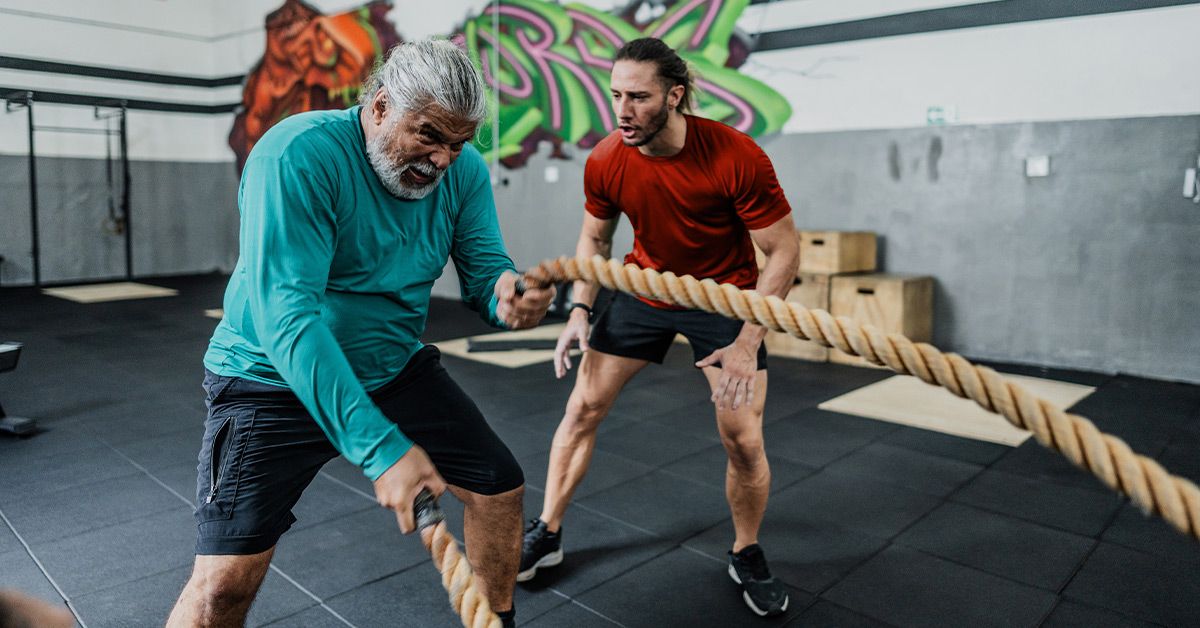Fitness
Stroke: Short Bursts of Intense Exercise May Improve Recovery

- New research shows that high intensity interval training (HIIT) may improve cardiovascular fitness in stroke survivors.
- Compared to moderate-intensity exercise, participants who performed HIIT doubled their cardiorespiratory fitness, as measured by VO2 peak.
- Both exercise groups still showed benefits, further underscoring the importance of exercise during stroke rehabilitation.
Exercise is essential to stroke recovery to
Improving cardiorespiratory fitness can also help
However, new research in the journal
“We can build strength, and we can give flexibility, and we can work on balance, but if you don’t have the heart capacity and the lung capacity to do things like walking and climbing stairs, then you are missing a big part of the puzzle,” Ada Tang, PhD, senior study author and a professor of rehabilitation science at McMaster University in Ontario, Canada, told Healthline.
“What we found in our study was that HIIT resulted in much greater improvements in fitness levels compared to traditional moderate-intensity continuous exercise,” she said.
Tang and a team of researchers oversaw a 12-week randomized controlled trial comparing HIIT to a more traditional workout regimen of moderate-intensity exercise.
The trial, which took place between 2018 and 2024, included an 8-week follow-up period for a total of 20 weeks of observation.
The participants included 82 people who experienced a stroke between six months and five years before the start of the study. The average age of the participants was 65, and 32 (39%) were female. Most participants were white.
Half of the participants were randomized to HIIT training, while the remaining participants participated in moderate-intensity continuous training (MICT). Both training regiments were conducted three days per week over the 12-week period but varied in duration and intensity.
The HIIT protocol involved 10 rounds of 1-minute intervals of high intensity exercise, defined as 80–100% of heart rate reserve (HRR), alternating with a 1-minute low intensity interval (30% HRR) for 19 minutes.
The moderate-intensity protocol involved 20–30 minutes of moderate-intensity exercise (40–60% HRR) continuously for the entire duration.
After 12 weeks, the group that participated in HIIT had improved their cardiorespiratory fitness by twice as much as the MICT group.
To define cardiovascular fitness, researchers used a measurement called VO2 peak, similar but not the same as VO2 max. VO2 peak is the highest amount of oxygen consumed at peak exercise, indicating how efficiently the body can transport and utilize oxygen in the bloodstream. So, a higher measurement means a higher level of fitness.
Those in the HIIT group had an average VO2 peak measurement of 3.5 mL/kg/min, while those in the MICT group had a more modest 1.7 mL/kg/min.
The results persisted, too. At week 20, at the end of the 8-week follow-up, the HIIT group maintained a clinically significant VO2 peak measurement of 1.71 mL/kg/min. At that level of fitness, individuals have a reduced risk of stroke and hospitalization.
Meanwhile, the moderate-intensity group declined to 0.67 mL/kg/min, which did not meet a clinically significant threshold.
Both groups showed improvement in walking endurance, measured through a
“Our takeaway message from that was: exercise is going to be good for people living with stroke. It doesn’t matter what kind of exercise. If you prefer modest-intensity continuous training, that’s great. If you want to try HIIT, you can do that — and either will improve walking,” Tang said.
High intensity interval training requires short bouts of difficult exertion, which means it may not be the best way form of exercise for certain individuals.
For instance, a limitation of this study is that all the participants were relatively high functioning and predominantly white. None had significant physical disabilities, nor were any of them actively hospitalized.
Tang and her fellow researchers also actively screened participants for heart disease, uncontrolled blood pressure, and diabetes.
“The study participants for this study were fairly select and functional and not typical for all stroke patients,” Daniel T. Lackland, DrPH, an American Heart Association EPI and Stroke Council member and director of the Division of Translational Neurosciences and Population Studies at the Medical University of South Carolina in Charleston, told Healthline. Lackland wasn’t involved in the study.
“The findings are only relevant to the select highly functional stroke survivors making generalizability not appropriate at this time. Further research for less functional stroke survivors is needed,” Lackland noted.
The participants also had access to a particular exercise machine known as a recumbent stepper, which you won’t find in your average gym. The machine allows participants to perform high intensity exercise while seated to mitigate the potential for injury due to balance and coordination problems caused by stroke.
If you’re interested in starting a HIIT regimen, check with your doctor first, especially if you’ve had a stroke or live with other health conditions. HIIT can be performed with many forms of exercise, such as:
- walking
- jogging
- cycling
- rowing
- stair climbing
High intensity interval training may be more effective for building cardiovascular fitness during stroke rehabilitation.
In a 12-week randomized trial, researchers found that individuals who did HIIT doubled their cardiovascular fitness compared to those performing more traditional, moderate-intensity exercise.
HIIT is a rigorous form of exercise that isn’t right for everyone. Before starting any new exercise routine, consult your healthcare team.









